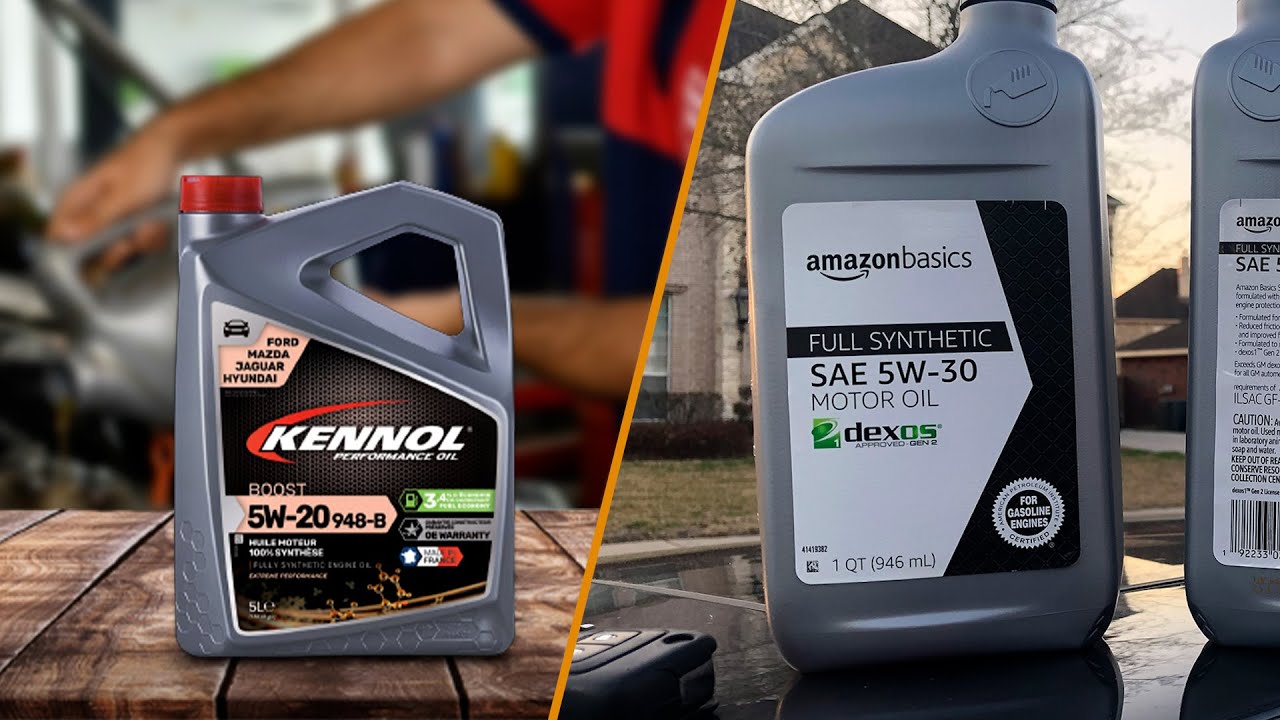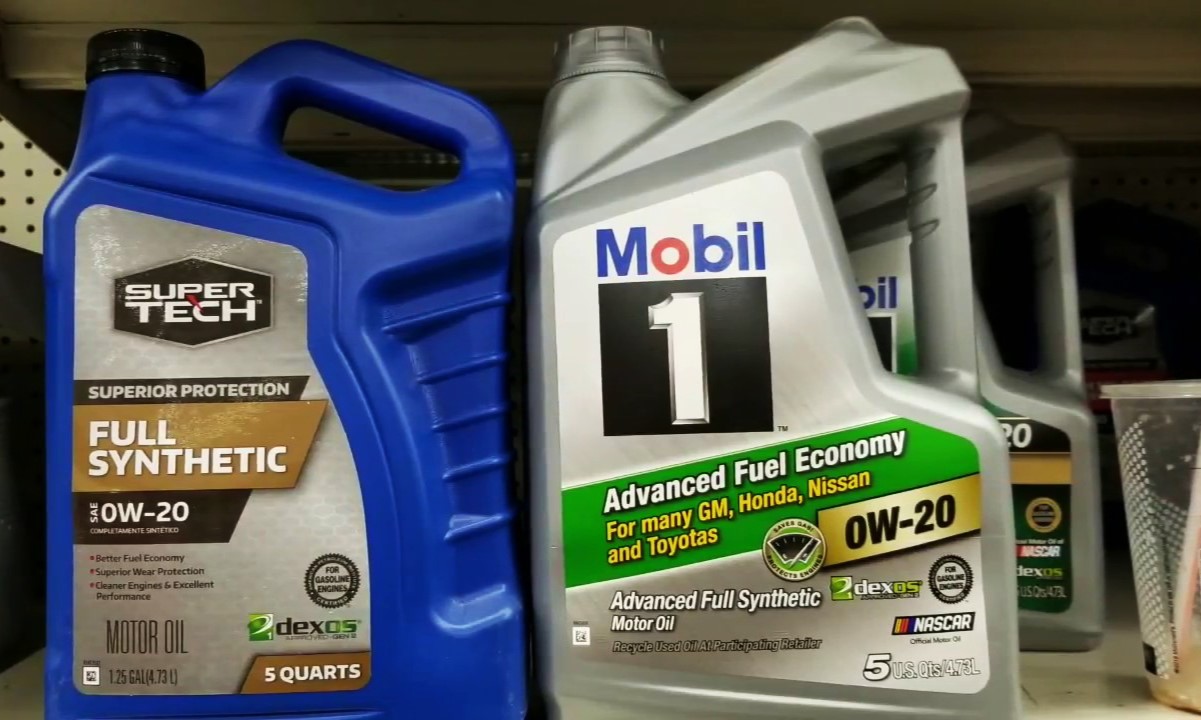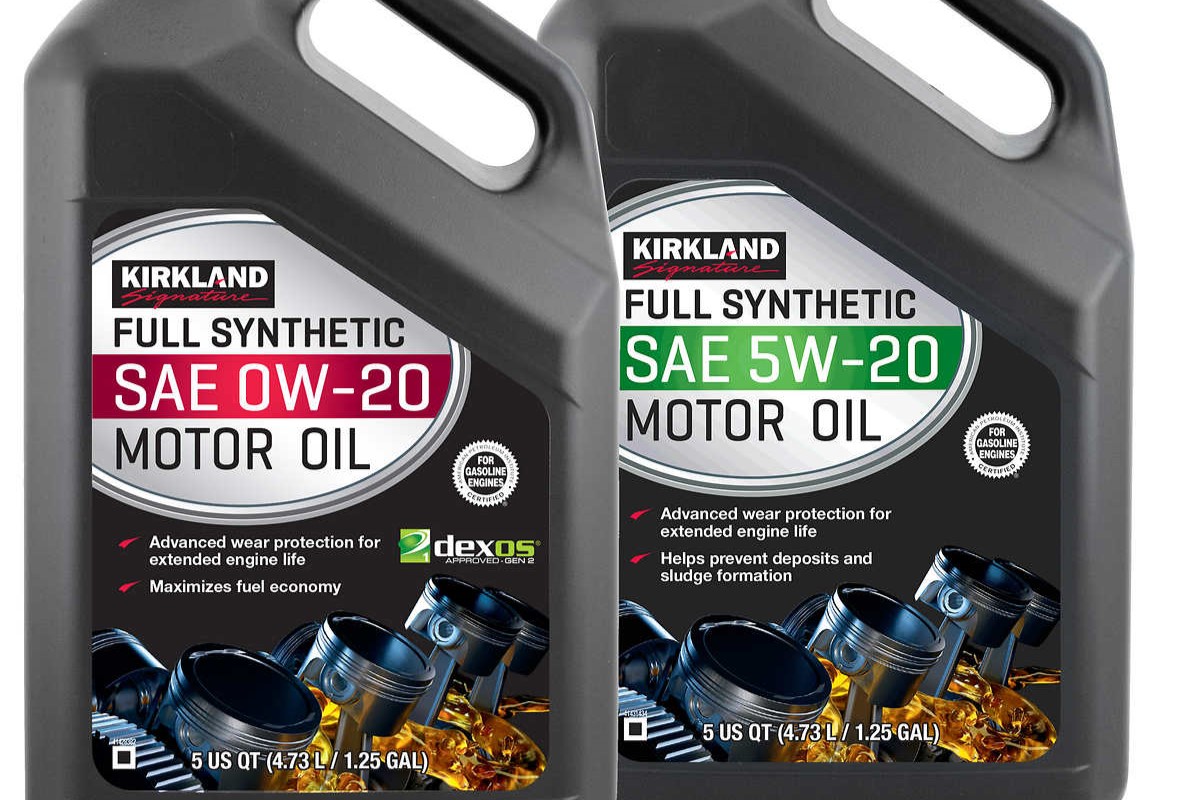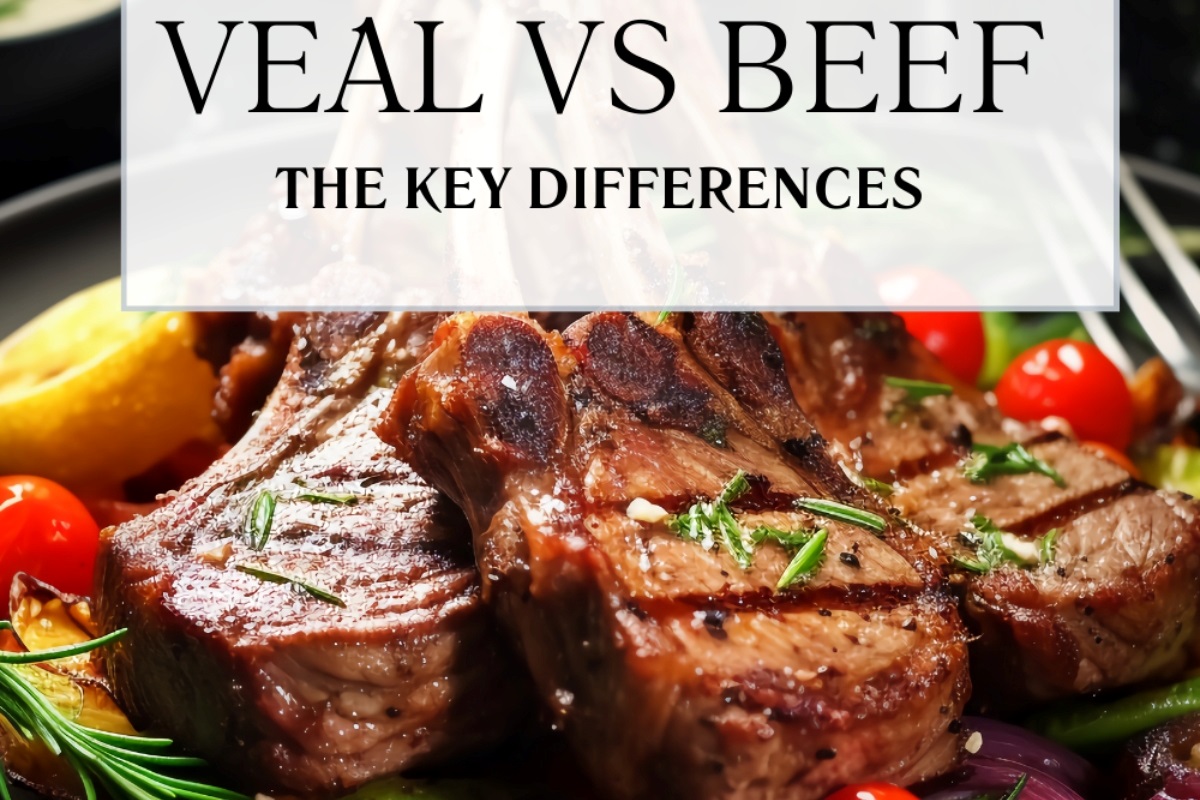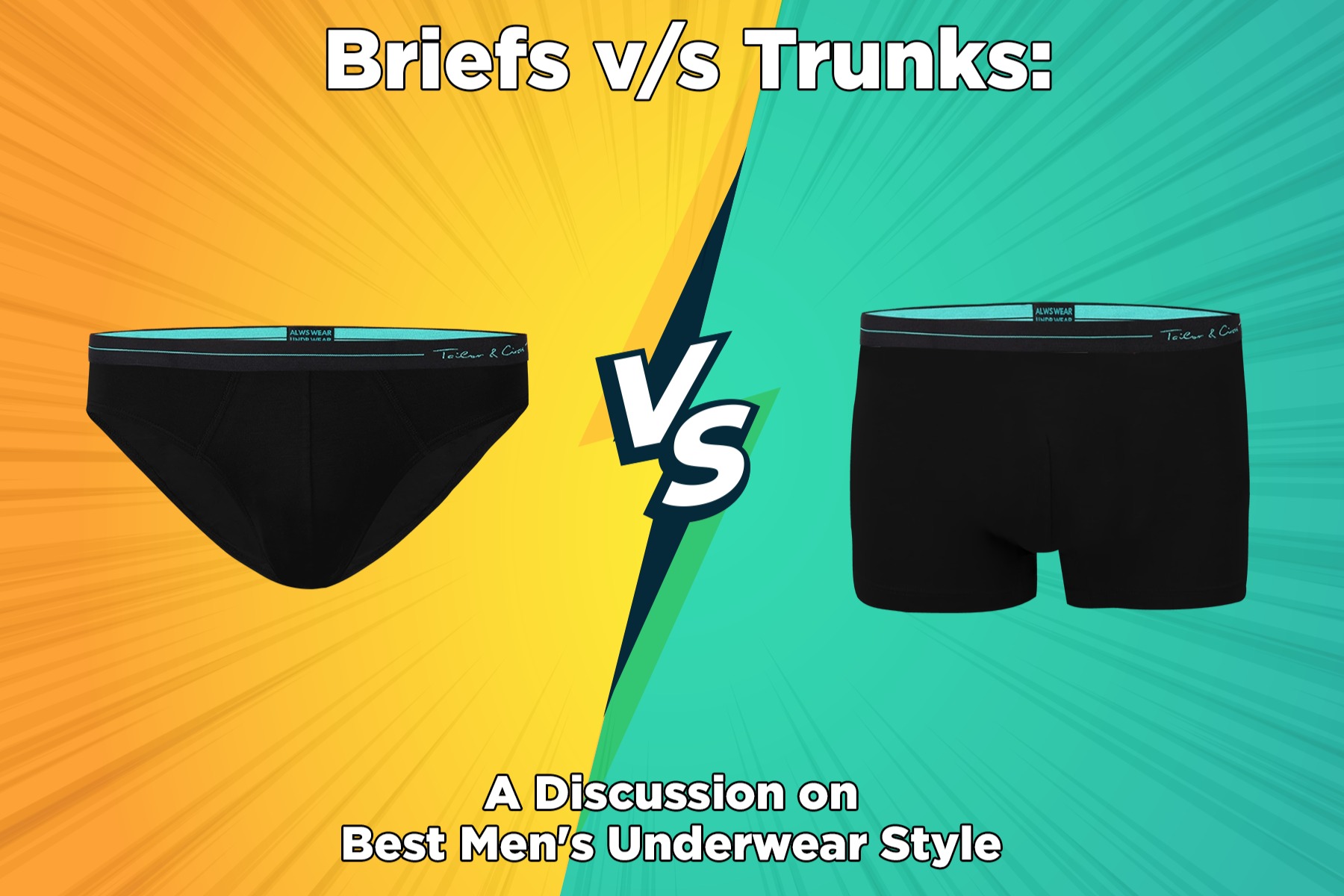Home>Automotive>10W30 Vs SAE 30: Which Oil Is Better?
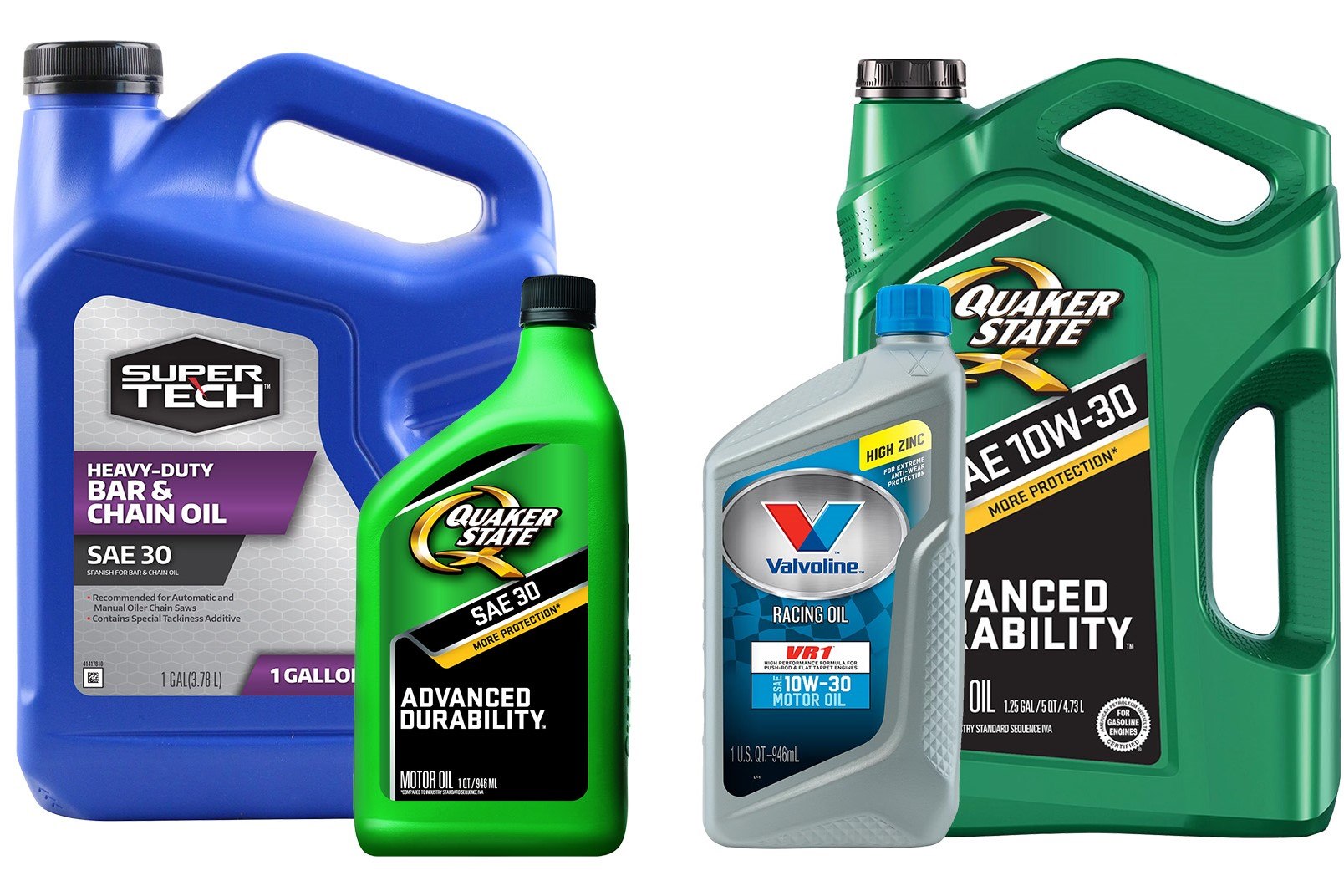

Automotive
10W30 Vs SAE 30: Which Oil Is Better?
Published: January 21, 2024
Discover the differences between 10W30 and SAE 30 oils to find out which one is the best choice for your automotive needs. Learn about the benefits and applications of each to make an informed decision.
(Many of the links in this article redirect to a specific reviewed product. Your purchase of these products through affiliate links helps to generate commission for Noodls.com, at no extra cost. Learn more)
Table of Contents
Introduction
Choosing the right motor oil for your vehicle is crucial for maintaining its performance and longevity. When it comes to selecting between 10W30 and SAE 30 oil, there are several factors to consider, including viscosity, temperature performance, and engine compatibility. Understanding the differences between these two types of motor oil can help you make an informed decision that aligns with your vehicle's specific needs.
In this comprehensive guide, we will delve into the characteristics of 10W30 and SAE 30 oil, explore their performance in various conditions, and consider the environmental and cost implications of each option. By the end of this article, you will have a clear understanding of the distinctions between 10W30 and SAE 30 oil, empowering you to make an educated choice for your vehicle's maintenance needs.
What is 10W30 and SAE 30 oil?
10W30 and SAE 30 oils are both motor oils designed to lubricate and protect internal combustion engines. The "10W30" and "SAE 30" designations represent the viscosity grades of the oils, indicating their flow characteristics at different temperatures.
10W30 oil is a multigrade oil, formulated to provide optimal viscosity and protection across a range of temperatures. The "10W" portion of the designation signifies the oil's viscosity in cold temperatures, with the "W" standing for "winter." This means that the oil has a lower viscosity when the engine is started in cold conditions, allowing for easier cold starts and reducing wear on engine components. The "30" denotes the oil's viscosity at operating temperatures, indicating its ability to maintain proper lubrication under normal engine operating conditions.
On the other hand, SAE 30 oil is a single-grade oil, meaning it has a fixed viscosity across all operating temperatures. The "SAE" stands for the Society of Automotive Engineers, which sets the standards for motor oil viscosity grades. SAE 30 oil is designed for use in moderate to high-temperature environments and is commonly recommended for older, warmer-running engines.
In summary, 10W30 oil is engineered to provide both cold-start protection and consistent lubrication at operating temperatures, making it suitable for a wide range of driving conditions. SAE 30 oil, with its single viscosity grade, is better suited for engines operating in consistently warmer climates or applications where a specific viscosity is recommended by the manufacturer.
Understanding the differences between these two types of motor oil is essential for selecting the most appropriate option for your vehicle's specific requirements. The next sections will delve deeper into the distinctions between 10W30 and SAE 30 oils, shedding light on their performance in various conditions, engine compatibility, environmental impact, and cost considerations.
Differences between 10W30 and SAE 30
The primary difference between 10W30 and SAE 30 oils lies in their viscosity characteristics and temperature performance. 10W30 oil, being a multigrade oil, offers distinct advantages over SAE 30 oil. The "10W" rating of 10W30 indicates its low-temperature viscosity, allowing for easier cold starts and reduced wear on engine components during initial startup. In contrast, SAE 30 oil, with its single viscosity grade, is less versatile in terms of temperature performance and is best suited for consistent, moderate to high-temperature operating conditions.
Another key distinction is the ability of 10W30 oil to adapt to varying temperatures. This multigrade oil maintains its viscosity across a broad temperature range, ensuring consistent lubrication and protection for the engine in diverse environmental conditions. On the other hand, SAE 30 oil, with its fixed viscosity, may not provide optimal protection in colder climates or during cold starts, potentially leading to increased engine wear and reduced efficiency.
Furthermore, 10W30 oil exhibits superior flow characteristics compared to SAE 30 oil. Its multigrade formulation allows for better circulation and lubrication, especially during cold starts when the oil needs to reach critical engine components quickly. This enhanced flow capability contributes to reduced friction and wear, promoting overall engine longevity and performance.
In terms of versatility, 10W30 oil is suitable for a wide range of vehicles and driving conditions. Its ability to provide both cold-start protection and consistent lubrication at operating temperatures makes it a popular choice for modern engines, especially those subjected to varying climates and driving patterns. Conversely, SAE 30 oil is often recommended for specific applications where a single viscosity grade is specified by the manufacturer, typically in warmer climates or for older engines designed to operate within a narrower temperature range.
Overall, the differences between 10W30 and SAE 30 oils underscore the importance of selecting the right motor oil based on the specific requirements of your vehicle and the prevailing operating conditions. Understanding these distinctions empowers vehicle owners to make informed choices that align with their engines' needs, ensuring optimal performance, longevity, and protection against temperature-related wear and tear.
Performance in different temperatures
The performance of motor oil in varying temperatures is a critical factor in maintaining engine health and efficiency. Both 10W30 and SAE 30 oils exhibit distinct characteristics when subjected to different temperature ranges, influencing their ability to provide adequate lubrication and protection across diverse environmental conditions.
10W30 oil, with its multigrade formulation, excels in adapting to temperature fluctuations. The "10W" rating indicates its low-temperature viscosity, allowing for smooth engine startups even in cold weather. This is particularly beneficial as the oil flows more easily during cold starts, reducing wear on vital engine components. As the engine warms up, the oil maintains its viscosity, ensuring consistent lubrication and protection under normal operating temperatures. This versatility makes 10W30 oil suitable for a wide range of climates, providing reliable performance in both cold and hot conditions.
In contrast, SAE 30 oil, being a single-grade oil, is optimized for use in moderate to high-temperature environments. Its fixed viscosity is tailored to deliver optimal lubrication and protection in warmer climates, making it less suitable for cold start conditions. When subjected to colder temperatures, SAE 30 oil may exhibit higher viscosity, potentially impeding its ability to flow quickly and reach critical engine components during startup. This can result in increased friction and wear until the oil reaches its operating temperature, highlighting its limitations in colder climates.
The distinct performance of 10W30 and SAE 30 oils in different temperatures underscores the importance of selecting the appropriate oil based on the prevailing climate and driving conditions. For vehicles operating in regions with significant temperature variations, 10W30 oil offers the advantage of consistent protection and lubrication across a broad temperature range. On the other hand, SAE 30 oil is better suited for applications where consistent, warmer temperatures are the norm, ensuring optimal engine performance and longevity under such conditions.
Understanding the temperature performance of these motor oils is crucial for making informed decisions regarding engine maintenance. By selecting the right oil based on the prevailing temperature conditions, vehicle owners can enhance engine longevity, reduce wear and tear, and optimize performance across diverse climates.
Engine compatibility
When it comes to engine compatibility, the choice between 10W30 and SAE 30 oils is influenced by the specific requirements and design of the engine. Understanding how these oils interact with different engine types is crucial for ensuring optimal performance, longevity, and protection.
10W30 oil, with its multigrade formulation, is compatible with a wide range of modern engines, including those equipped with variable valve timing (VVT) and turbochargers. Its ability to provide both cold-start protection and consistent lubrication at operating temperatures makes it a versatile choice for vehicles subjected to varying driving conditions and climates. This adaptability is particularly advantageous for engines with tight tolerances and advanced technologies, as it ensures proper lubrication and protection across a broad temperature range. Additionally, 10W30 oil is suitable for both gasoline and diesel engines, making it a popular choice for modern vehicles with diverse powertrain configurations.
On the other hand, SAE 30 oil is commonly recommended for specific applications, particularly older engines designed to operate within a narrower temperature range. Engines that run consistently in moderate to high-temperature environments, such as air-cooled or stationary industrial engines, may benefit from the targeted viscosity characteristics of SAE 30 oil. Additionally, some manufacturers specify the use of SAE 30 oil for certain vintage or classic vehicles, aligning with the original design and operating parameters of these engines.
The compatibility of 10W30 and SAE 30 oils with different engine types underscores the importance of selecting the right oil based on the manufacturer's recommendations and the specific operating conditions of the vehicle. By adhering to the prescribed oil viscosity and performance specifications, vehicle owners can ensure that their engines receive the appropriate lubrication and protection, promoting optimal performance and longevity.
In summary, engine compatibility plays a pivotal role in the selection of motor oil, and understanding the nuances of 10W30 and SAE 30 oils in relation to different engine types is essential for making informed maintenance decisions. By aligning the oil choice with the specific requirements of the engine, vehicle owners can uphold the performance, efficiency, and durability of their vehicles' powerplants.
Environmental impact
The environmental impact of motor oil usage is a critical consideration in the context of sustainable vehicle maintenance and ecological responsibility. When comparing the environmental implications of 10W30 and SAE 30 oils, several factors come into play, including resource utilization, emissions, and disposal considerations.
10W30 oil, as a multigrade oil designed to offer versatile performance across a range of temperatures, contributes to reduced engine wear and improved fuel efficiency, thereby potentially lowering overall carbon emissions. By providing efficient cold-start protection and consistent lubrication, 10W30 oil helps minimize friction and wear within the engine, promoting longevity and reducing the need for frequent oil changes. This can lead to a decrease in used oil disposal, contributing to a more sustainable approach to vehicle maintenance.
On the other hand, SAE 30 oil, with its single-grade viscosity tailored for warmer operating conditions, may be perceived as less adaptable to diverse temperature ranges. In applications where SAE 30 oil is utilized, engines may experience increased wear during cold starts, potentially leading to higher emissions and resource consumption over time. However, in specific environments where consistent high temperatures prevail, SAE 30 oil's targeted viscosity characteristics may contribute to optimized engine performance and reduced emissions under those conditions.
In terms of resource utilization, the production and distribution of multigrade oils like 10W30 involve the formulation of oils capable of functioning effectively in varying climates, potentially requiring more complex manufacturing processes and additional resources. Conversely, the production of single-grade oils such as SAE 30 may involve less intricate manufacturing requirements, potentially leading to a smaller ecological footprint in terms of resource utilization during the production phase.
Additionally, the disposal of used motor oil is a critical environmental consideration. Both 10W30 and SAE 30 oils require proper disposal to prevent environmental contamination. However, the extended oil change intervals facilitated by 10W30's multigrade properties may result in reduced overall used oil generation, potentially contributing to a lower environmental impact in terms of disposal and recycling efforts.
In summary, the environmental impact of 10W30 and SAE 30 oils encompasses various facets, including resource utilization, emissions, and disposal considerations. Understanding these factors is essential for making informed decisions that align with sustainable vehicle maintenance practices and environmental stewardship. By considering the ecological implications of motor oil usage, vehicle owners can contribute to a more sustainable approach to engine maintenance and environmental conservation.
Cost comparison
When evaluating the cost implications of choosing between 10W30 and SAE 30 oils for engine maintenance, several factors come into play, including initial purchase price, long-term maintenance expenses, and overall value proposition. Understanding the cost dynamics of these motor oils is essential for making informed decisions that align with budgetary considerations and long-term financial planning.
The initial purchase price of motor oil is a primary consideration for vehicle owners. In general, multigrade oils like 10W30 may be priced slightly higher than their single-grade counterparts such as SAE 30. This price differential is often attributed to the additional manufacturing complexity and formulation required to create multigrade oils capable of providing consistent performance across diverse temperature ranges. While the upfront cost of 10W30 oil may be marginally higher, its versatility and ability to offer cold-start protection and consistent lubrication in varying climates contribute to its overall value proposition.
In terms of long-term maintenance expenses, the performance characteristics of 10W30 and SAE 30 oils play a significant role in influencing overall costs. 10W30 oil, with its multigrade formulation, can contribute to reduced engine wear and improved fuel efficiency, potentially leading to longer intervals between oil changes. This extended oil change interval, facilitated by 10W30's ability to maintain consistent performance across diverse temperatures, may result in lower overall maintenance expenses over the life of the vehicle. Conversely, SAE 30 oil, with its single-grade viscosity optimized for specific temperature ranges, may necessitate more frequent oil changes in environments with significant temperature fluctuations, potentially leading to higher long-term maintenance costs.
Furthermore, the overall value proposition of motor oil encompasses not only the upfront purchase price and long-term maintenance expenses but also the benefits derived from the oil's performance characteristics. 10W30 oil's ability to provide efficient cold-start protection and consistent lubrication in diverse climates can contribute to enhanced engine longevity and reduced wear, potentially translating to long-term cost savings and improved overall value. On the other hand, while SAE 30 oil may be more cost-effective in terms of initial purchase price, its limited temperature adaptability and potential need for more frequent oil changes in variable climates may impact its overall value proposition.
In summary, the cost comparison between 10W30 and SAE 30 oils involves a comprehensive evaluation of initial purchase price, long-term maintenance expenses, and overall value proposition. By considering these factors, vehicle owners can make informed decisions that align with their budgetary constraints and long-term financial objectives, ensuring optimal engine maintenance while maximizing cost-efficiency and value over time.
Conclusion
In conclusion, the choice between 10W30 and SAE 30 oils hinges on a multitude of factors, including viscosity characteristics, temperature performance, engine compatibility, environmental impact, and cost considerations. Understanding the distinctions between these two types of motor oil is essential for making informed decisions that align with the specific requirements of the vehicle and the prevailing operating conditions.
10W30 oil, with its multigrade formulation, offers versatile performance across diverse temperature ranges, providing efficient cold-start protection and consistent lubrication under varying climates. This adaptability makes it a popular choice for modern engines subjected to fluctuating driving conditions and temperature variations. Additionally, 10W30 oil's ability to reduce engine wear, enhance fuel efficiency, and potentially lead to longer intervals between oil changes underscores its value as a comprehensive maintenance solution for a wide range of vehicles.
On the other hand, SAE 30 oil, with its single-grade viscosity optimized for specific temperature ranges, is well-suited for applications where consistent, warmer temperatures prevail. Its targeted performance characteristics make it an ideal choice for engines designed to operate within narrower temperature parameters, particularly in moderate to high-temperature environments.
When considering engine compatibility, it is essential to adhere to the manufacturer's recommendations and specifications, ensuring that the selected oil aligns with the specific requirements and design of the engine. This approach promotes optimal performance, longevity, and protection, contributing to the overall health and efficiency of the vehicle's powerplant.
The environmental impact of motor oil usage encompasses resource utilization, emissions, and disposal considerations. While 10W30 oil's multigrade properties may contribute to reduced engine wear and improved fuel efficiency, potentially lowering overall carbon emissions, SAE 30 oil's targeted viscosity characteristics may offer advantages in specific environments with consistent high temperatures. Understanding these environmental implications is crucial for promoting sustainable vehicle maintenance practices and environmental stewardship.
In terms of cost comparison, the upfront purchase price, long-term maintenance expenses, and overall value proposition of 10W30 and SAE 30 oils play a pivotal role in guiding maintenance decisions. While 10W30 oil may entail a slightly higher initial purchase price, its long-term benefits, including potential cost savings from extended oil change intervals, contribute to its overall value proposition.
In essence, the selection between 10W30 and SAE 30 oils demands a comprehensive assessment of the vehicle's requirements, prevailing operating conditions, and long-term maintenance objectives. By understanding the distinct characteristics and implications of these motor oils, vehicle owners can make informed choices that promote optimal engine performance, longevity, and efficiency, aligning with their specific needs and environmental considerations.
